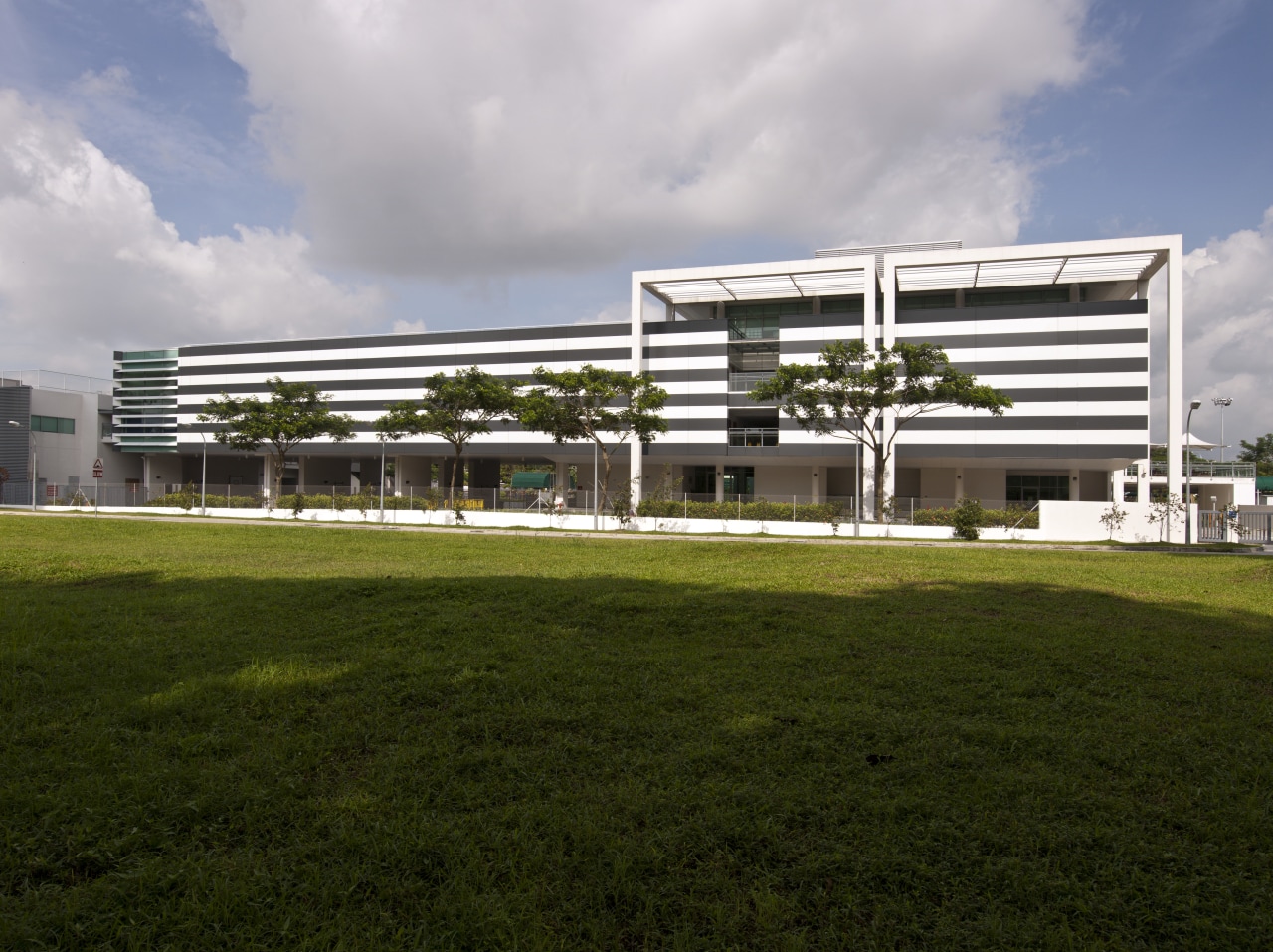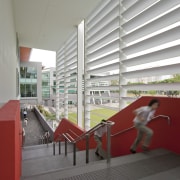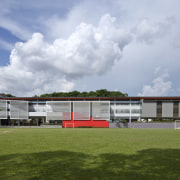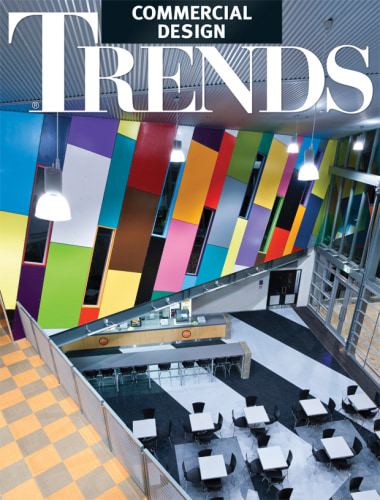Cool school
Sustainable, passive design principles ensure the buildings in this Singapore school minimise the extremes of the tropical weather, while maximising the natural light
Creating an environment that is conducive to learning is the primary focus of any new school design. For this Singapore school project, that involved a close study of the latest teaching and learning philosophies and sustainable passive design principles that would counter the tropical climate extremes.
Architectural firm Francis-Jones Morehen Thorp (FJMT), in association with Architects 61, was commissioned to review the masterplan and design the new four-storey Lower School for the Australian International School Singapore, which has experienced rapid growth in recent years. This project, known as Phase 2, was followed by Phase 3 a new building for the Senior School (the Peter Bond Senior School).
FJMT architect Elizabeth Carpenter says the new 11,500m² Lower School facility, which caters for an additional 840 students from preschool to Grade Two, consists of offices, a library, classrooms, a canteen, multipurpose space and basement parking.
"The built forms are situated around a landscaped courtyard, which provides a discrete, secure and easily identifiable play area for the Lower School. The new wing also links to the existing gymnasium complex and school buildings."
Carpenter says a key consideration was the need for all users to easily comprehend the building.
"For many students, this is their first contact with an institutional environment. Orientation for students, staff and visitors is assisted by a central atrium space, which represents the heart of the new school. It addresses the landscaped courtyard, provides access to all major spaces and embodies the basic principles of the new building in that it creates a sense of place.
"The design also recognises that younger students are likely to be unfamiliar with their new environment. Sharp corners, indirect paths of travel and obstacles are minimised."
Carpenter says students in each year are placed in a group known as a neighbourhood. This is divided into two smaller learning communities, or clusters, which consist of open learning spaces, classrooms, smaller interview rooms, staff work rooms, storage and amenity areas. All classrooms and open-plan breakout areas are positioned close to the facades to allow maximum penetration of daylight.
"There was a strong focus on passive design to provide an efficient and cost-effective approach to climate control," says the architect. "The main teaching buildings are orientated in a north-south direction, which is perfect for the tropical location, with its extreme heat and monsoon weather."
The main teaching classrooms in the Lower School are air conditioned, but all circulation corridors, stairs and the large breakout areas are naturally ventilated. The central atrium space is fully open and provides access to specialised teaching areas, such as the music room, library and gymnasium, which features low-level displacement air conditioning.
Carpenter says a series of large, ellipsoid louvres on the facades maximise natural light, while minimising solar penetration and glare. The upper louvres are angled to act as light shelves, and the lower louvres angled to provide views to the outdoor play areas.
"Local Singapore architecture and references to the Australian landscape were used to develop a subtle palette of materials," says the architect. "Because of the equatorial location, emphasising light and shade is important to create a depth to the facades."
The Senior School, which caters for 600 students from Years 10-12, provides an additional 4500m² in an elevated building that incorporates a bus bay.
"As with Phase 2, air circulation and open-plan learning areas are naturally ventilated, and daylight is maximised to teaching classrooms," says Carpenter. "Because this building needed to have an east-west orientation, strategic measures were put in place to mitigate the solar gain. All teaching spaces are orientated to the east to minimise the impact of the afternoon sun in the west. There is also a single loaded corridor against the western facade that acts as a buffer zone to improve the climate control."
Carpenter says the architectural approach for Phase 3 is similar to Phase 2 in that it creates an individual identity for the school.
"One of the challenges of the Senior School is the fact that the building is orientated away from the adjacent expressway, which passes to the west of the site. We wanted to ensure the prominent west side of the school also had a distinctive presence, so we introduced a simple graphic device of large louvred frames, not unlike the louvres on the Phase 2 gymnasium. These not only create an identity but also direct students and visitors to the school up a main flight of external stairs. The stairs and their associated red wall and louvred screen symbolise the Senior School."
Story by: Trendsideas
Home kitchen bathroom commercial design
Personality plus
Diving into nature
Classic looks, contemporary efficiency
















